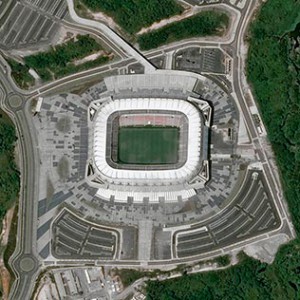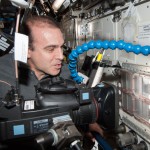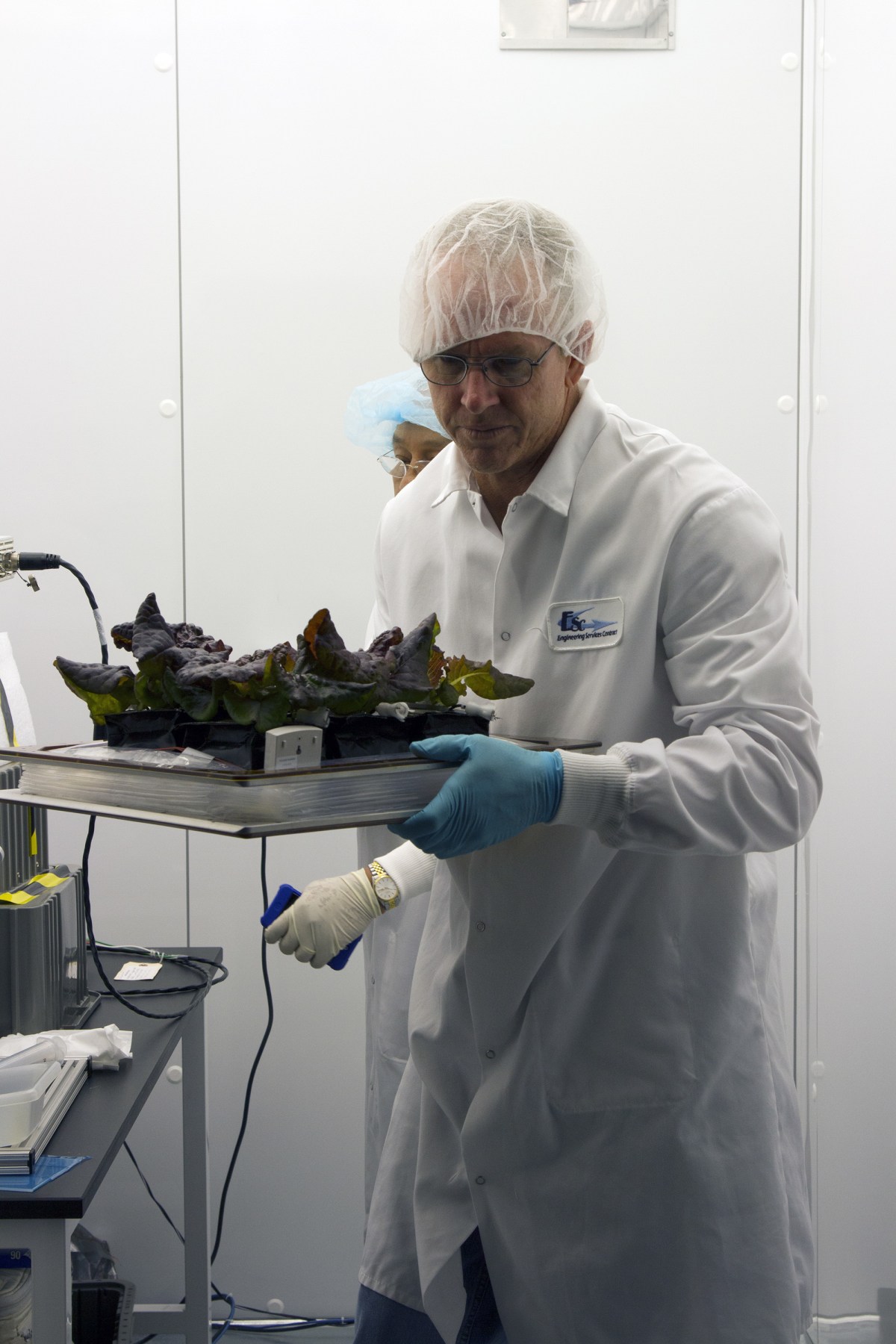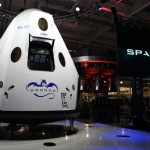The Apollo astronauts took a rover with them to the moon so they could survey more of the lunar surface. The space shuttle used its robotic arm to perform numerous functions from operating experiments to grabbing satellites including the Hubble Space Telescope for repairs to maneuvering large modules into place during construction of the International Space Station. NASA’s next generation of human-carrying spacecraft are in development now. If it were up to you, what equipment would you include in the design and what would you use it for?
Category: International Space Station
Station Astronauts Show Off World Cup Skills
The United States plays Germany today in the World Cup and the viewership will not be limited to the Earthbound. The crew of the International Space Station is expected to tune in for the match.
Reid Wiseman kidded his colleagues in orbit that the stronger U.S. team spirit aboard the space station is a sign the U.S. will be stronger on the field too. “I believe we will win. It’s two against one up here, so I think the U.S. chances are pretty good,” Wiseman said during an in-flight interview with ESPN on June 24.
Wiseman says the crew already was checking its busy schedule for Thursday to see how they can fit in watching the game during what will be afternoon time for them. Read about the friendly rivalry between American and German station crew members here.
Ant Experiment Sheds Light on Search Techniques
Researchers dispatched a crew of ants to the International Space Station recently to study the methods the colony use to search and explore their surroundings. Scientists are studying whether the process the ants use can be translated into a mathematical algorithm that can aid robotics and computer programs on Earth. Read more here in an article about the ant-stronauts. You can also click here for specific notes about the experiment. Astronauts on the station including Rick Mastracchio, pictured, filmed the colony go about its work.
Spot Our Destination
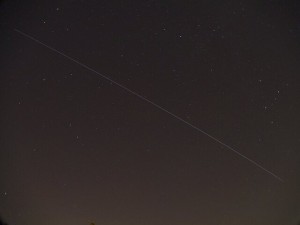 Folks in Central Florida will be able to see the International Space Station move overhead for three minutes Monday night beginning at 9:44 p.m EDT. Its maximum height will be 69 degrees and it will appear in the north-northwest and disappear at east-southeast. You can log on to http://spotthestation.nasa.gov/ to get email alerts and to check observation times for cities all over the world. The ISS, which is Commercial Crew Program’s ultimate destination, is a one-of-a-kind research laboratory and testbed for long-duration spaceflight technology.
Folks in Central Florida will be able to see the International Space Station move overhead for three minutes Monday night beginning at 9:44 p.m EDT. Its maximum height will be 69 degrees and it will appear in the north-northwest and disappear at east-southeast. You can log on to http://spotthestation.nasa.gov/ to get email alerts and to check observation times for cities all over the world. The ISS, which is Commercial Crew Program’s ultimate destination, is a one-of-a-kind research laboratory and testbed for long-duration spaceflight technology.
Plants Harvested as Part of Station Experiment
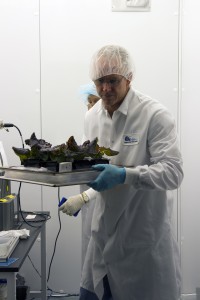 Scientists at NASA’s Kennedy Space Center in Florida harvested the leaves of red lettuce plants grown on Earth inside the International Space Station Environmental Simulator chamber at the Space Station Processing Facility. The plants were grown using the same kind of Veggie chamber that was deployed and is being operated on the station. Read some of the details here. The researchers on the ground also stuck closely to the same schedules procedures and operations that were followed by astronauts on the station so they could produce a reliable control group. Such research is crucial to NASA’s planning for deep-space missions by astronauts and the unique laboratory of the ISS is critical to achieving that research. The Commercial Crew Program is working with aerospace industry partners to begin operational flights by 2017 on privately built and operated spacecraft that will permit more crew members to work on the station and conduct research there.
Scientists at NASA’s Kennedy Space Center in Florida harvested the leaves of red lettuce plants grown on Earth inside the International Space Station Environmental Simulator chamber at the Space Station Processing Facility. The plants were grown using the same kind of Veggie chamber that was deployed and is being operated on the station. Read some of the details here. The researchers on the ground also stuck closely to the same schedules procedures and operations that were followed by astronauts on the station so they could produce a reliable control group. Such research is crucial to NASA’s planning for deep-space missions by astronauts and the unique laboratory of the ISS is critical to achieving that research. The Commercial Crew Program is working with aerospace industry partners to begin operational flights by 2017 on privately built and operated spacecraft that will permit more crew members to work on the station and conduct research there.
Mars Strategy at Center of Exploration Plans
Working with private companies to ferry astronauts to and from the International Space Station is a part of NASA’s stepping stone approach to the human exploration of Mars. The space agency is also incorporating lessons learned from space station research into plans for deep space missions aboard the Space Launch System and Orion spacecraft. Review the details of the agency’s exploration plan on the Human path to Mars mini poster.
First Certification Phase for Crewed Commercial Spacecraft Completed
NASA’s Commercial Crew Program and its aerospace industry partners completed the first phase of certification agreements today. Under the contracts, The Boeing Company, Sierra Nevada Corporation Space Systems (SNC) and Space Exploration Technologies (SpaceX) completed reviews detailing how each plans to meet NASA’s certification requirements to transport space station crew members to and from the orbiting laboratory. NASA awarded the contracts totaling $30 million in December 2012. Read details at http://go.nasa.gov/1kRkIgE
Space Station Experiments Back on Earth
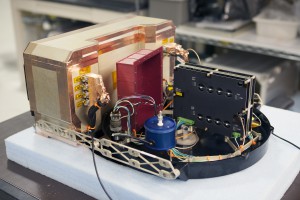
Three sets of completed science experiments from the International Space Station are back on Earth and headed to their principal investigators for further study. The three experiments studied biological aspects of long-duration spaceflight, something for which the space station is uniquely suited. Known as BRIC-18, Biotube-MICRo and APEX-02-2, the projects were carried to the station aboard the SpaceX-3 cargo resupply mission.
The astronauts on the station unloaded the payloads, conducted the research and repacked the spent experiments inside the capsule for safe return to Earth almost a month later.
Such research is vital for NASA’s plans to send astronauts into deep space to explore asteroids and Mars, missions that would last weeks, months and years. Enabling more of that research by providing more crew members and time to conduct it in space is one of the goals of the Commercial Crew Program which is partnering with aerospace industry to develop spacecraft to carry astronauts to low-Earth orbit.
For more details about the payloads and research detail, check out the in-depth feature at http://go.nasa.gov/1kkoxvc
From Wind Tunnel Tests to Software Reviews, NASA’s Commercial Crew Partners Continue to Advance
 Working in wind tunnels, software laboratories and work stations across America, NASA’s Commercial Crew Program (CCP) partners continue to make strides in advancing the designs of the American spacecraft and rockets that will carry humans safely and reliably into low-Earth orbit from U.S. soil by 2017.
Working in wind tunnels, software laboratories and work stations across America, NASA’s Commercial Crew Program (CCP) partners continue to make strides in advancing the designs of the American spacecraft and rockets that will carry humans safely and reliably into low-Earth orbit from U.S. soil by 2017.
Blue Origin, The Boeing Company, Sierra Nevada Corporation (SNC) and Space Exploration Technologies (SpaceX) are accomplishing milestones established through Space Act Agreements as part of the agency’s Commercial Crew Development Round 2 and Commercial Crew Integrated Capability initiatives.
CCP’s engineering team is working closely with its partners as they develop the next generation of crewed spacecraft and work toward challenging evaluations and tests this year. Ultimately, NASA intends to certify and use American-made commercial systems to fly astronauts from U.S. soil to the International Space Station, and back, ending our sole reliance on Russia to get to space.
“What we have seen from our industry partners is a determination to make their components and systems work reliably, and in turn they’ve been able to demonstrate the complex machinery that makes spaceflight possible will also work as planned,” said Kathy Lueders, Commercial Crew Program manager. “These next few months will continue to raise the bar for achievement by our partners.”
Read details here.



